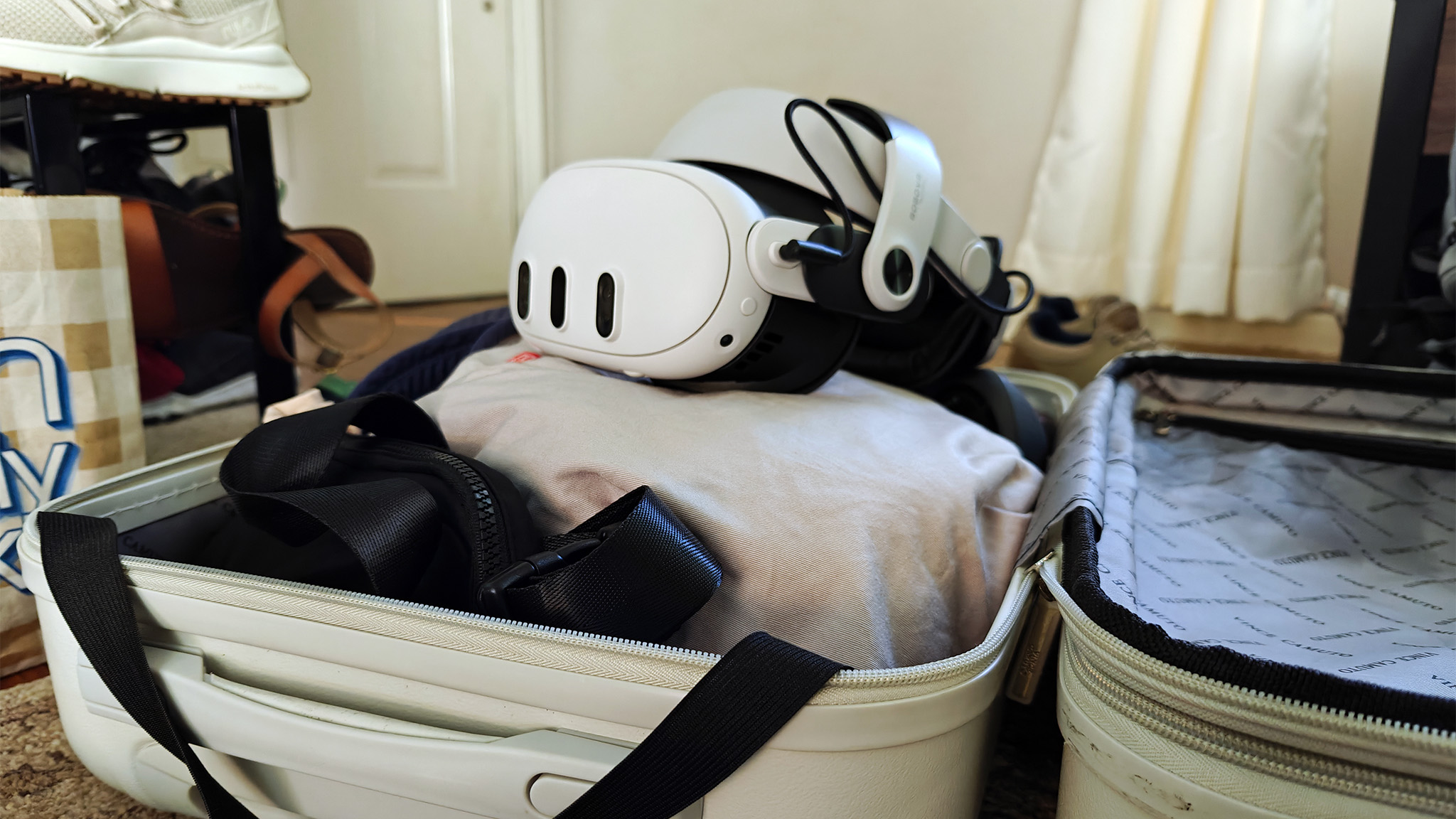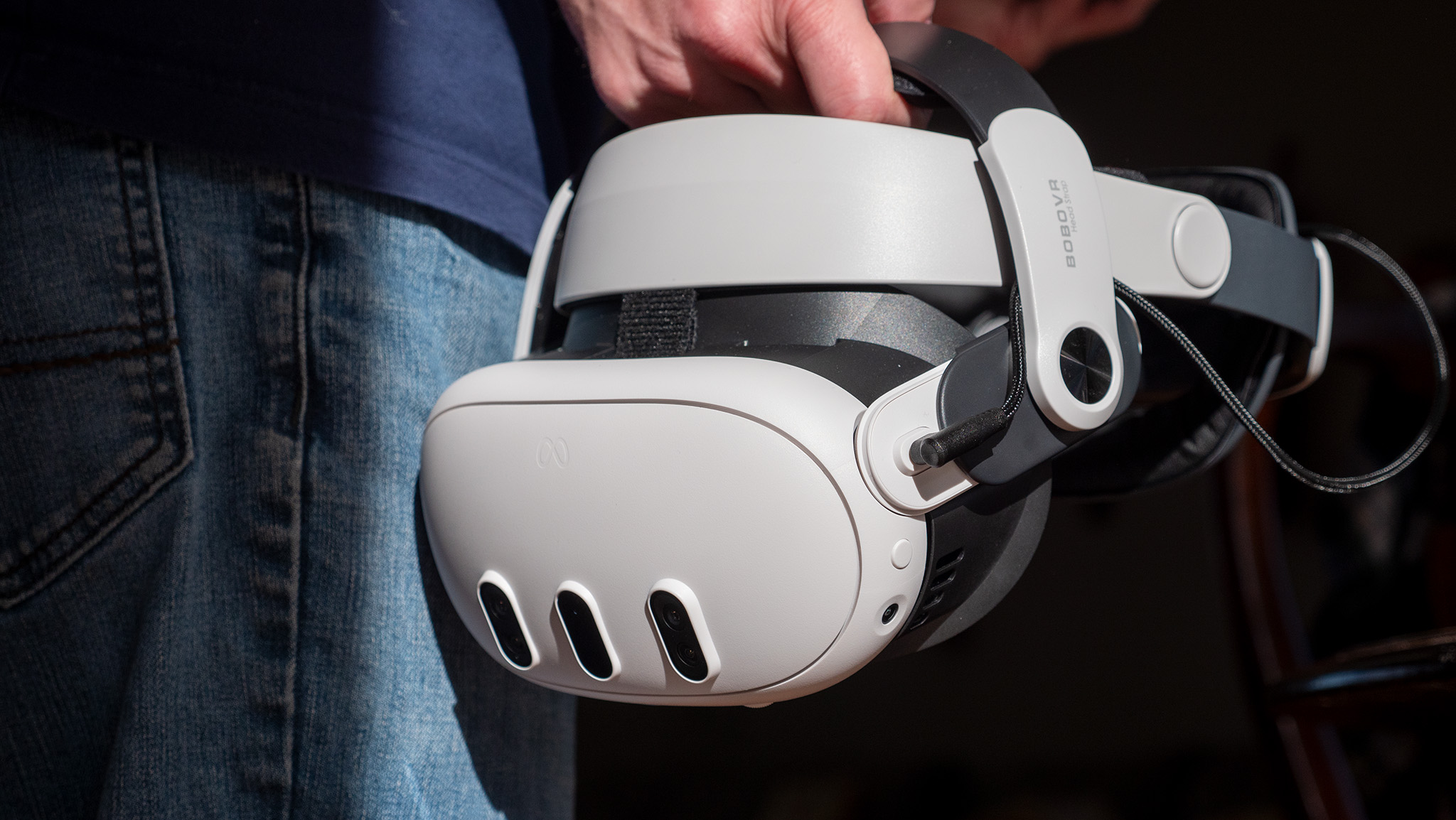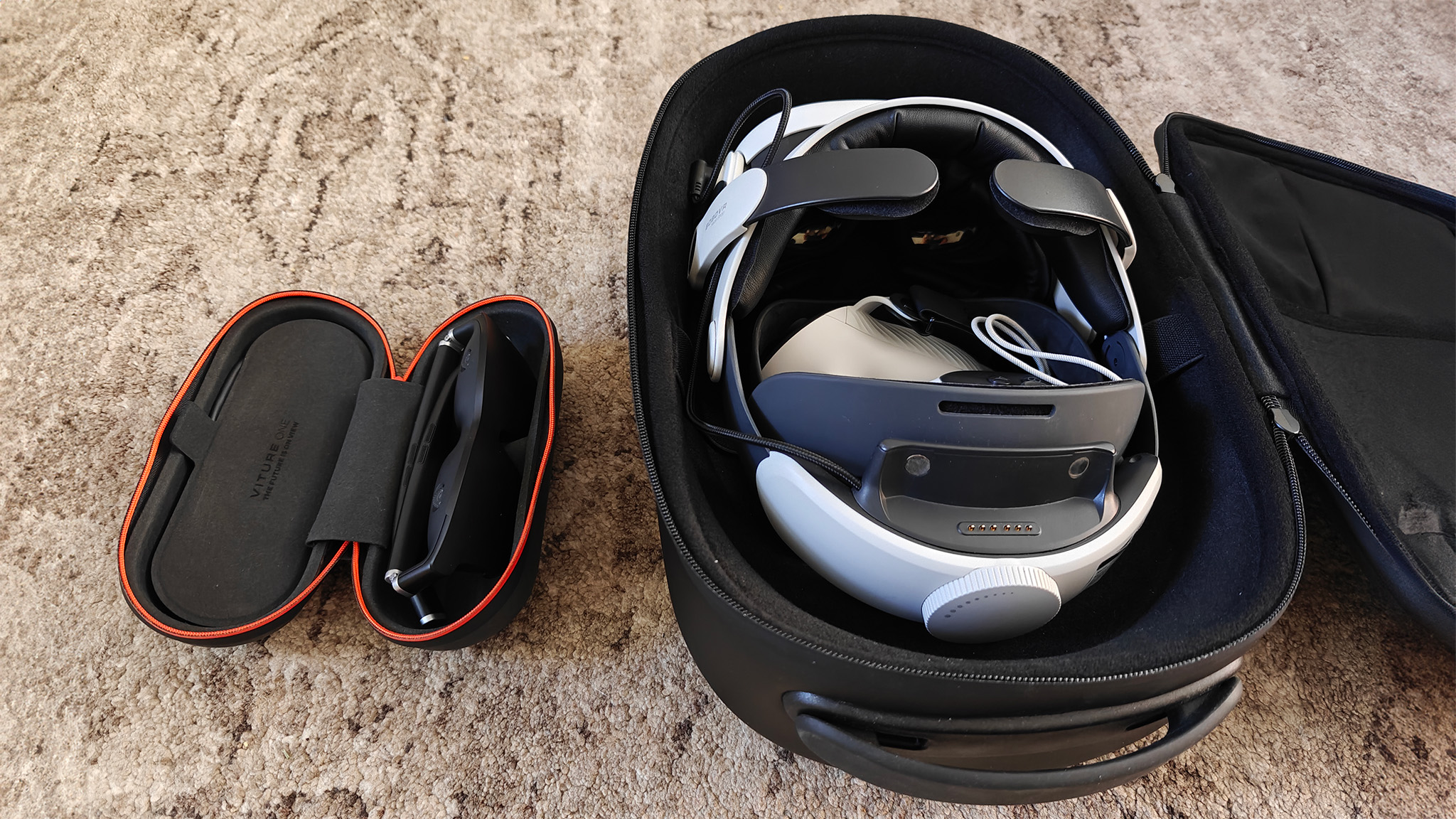

In his weekly column, Android Central Senior Content Producer Nick Sutrich delves into all things VR, from new hardware to new games, upcoming technologies, and so much more.
Long, boring flights are the bane of modern first-world existence. Between having to sit still for hours and having little to do, these kinds of flights are generally no fun. And forget about working on a plane unless you enjoy neck pain or the potential of having your laptop smashed by the reclining seat in front of you.
That's why the Meta Quest 3's airplane mode is such a godsend. It allows the headset to be used on a plane and it works incredibly well, as is proven by countless YouTube videos and other customer feedback. But I haven't been able to adequately use the feature yet for one good reason: I can't fit the headset in my luggage.
As I was packing for my trip to see Samsung's latest at Galaxy Unpacked July 2024, I realized that my suitcase was quickly running out of room. For a three-day trip, I had to pack clothes, electronics, my camera, cables, and all sorts of things into a suitcase and a backpack. Once all that was packed, I had a tiny cube of space that a VR headset simply wouldn't fit into.
It's a problem I've run into time and time again over the past few weeks since the feature debuted — I travel quite a bit for this job — and while I'm still going to try to fit it into a future trip, it's clear that the size of modern VR headsets is still prohibitive to some of the things we desperately want to use them for.
A tale of two bags

While everyone's travel situations are different, I've found that the best smart glasses are better travel companions because of their smaller size. While most of these glasses are quite as small as a standard pair of glasses — that's especially true of smart display glasses like my favorite pair, Viture Pro — they're still substantially smaller than any standalone VR headset on the market.
Smart display glasses are a much better travel companion because of the size and ease of use.
Smart display glasses are effectively a giant virtual monitor that rests on your face. They attach to any device that supports USB-C display output — your phone, laptop, or even the Steam Deck — giving you the ability to relax and hold your head in a natural position instead of craning your neck down the whole time.
My colleague, Andrew Myrick, recently took Xreal Air 2s on a trip with him and they saved him from neck pain.

But Meta Quest headsets don't support this feature. You either have to sideload videos onto your headset and use a 3rd party app to play them — not something that's super user-friendly — or play an offline VR game you might have installed on your headset.
If the size didn't stop me, the fact that I can't plug my laptop directly into a Quest and use it as a virtual monitor would.
There's little hope of using one for working on a plane because you'd need to connect to your laptop over a Wi-Fi network, and that usually doesn't work well on a plane.
I'd prefer to use the Quest because the field of view is significantly wider than any pair of smart glasses on the market and I generally find the Quest's design quite comfortable over time, especially when using a headstrap like the BoboVR S3 Pro.
It also does head tracking better than any pair of smart glasses on the market, making it feel more like you actually have a TV or monitor in front physically residing in front of you. Most smart glasses pin the display to your vision, meaning it moves around with your head. That can be particularly uncomfortable when there's turbulence on a plane, as trying to follow bouncy text can cause nausea.
The ironic thing is that smart glasses are often just as expensive as a Meta Quest headset. That feels a little silly, given that the Quest is a completely standalone console and the smart glasses are just a monitor, but sometimes you have to pay for convenience.
The best Meta Quest carrying cases can protect your Quest while traveling, but until the headsets get a lot smaller, I'm not sure I'll be taking one on too many flights.
Get a pair of Viture One Lite smart display glasses and a battery dock for your Nintendo Switch or Steam Deck so you can game for hours on the go without neck pain.







